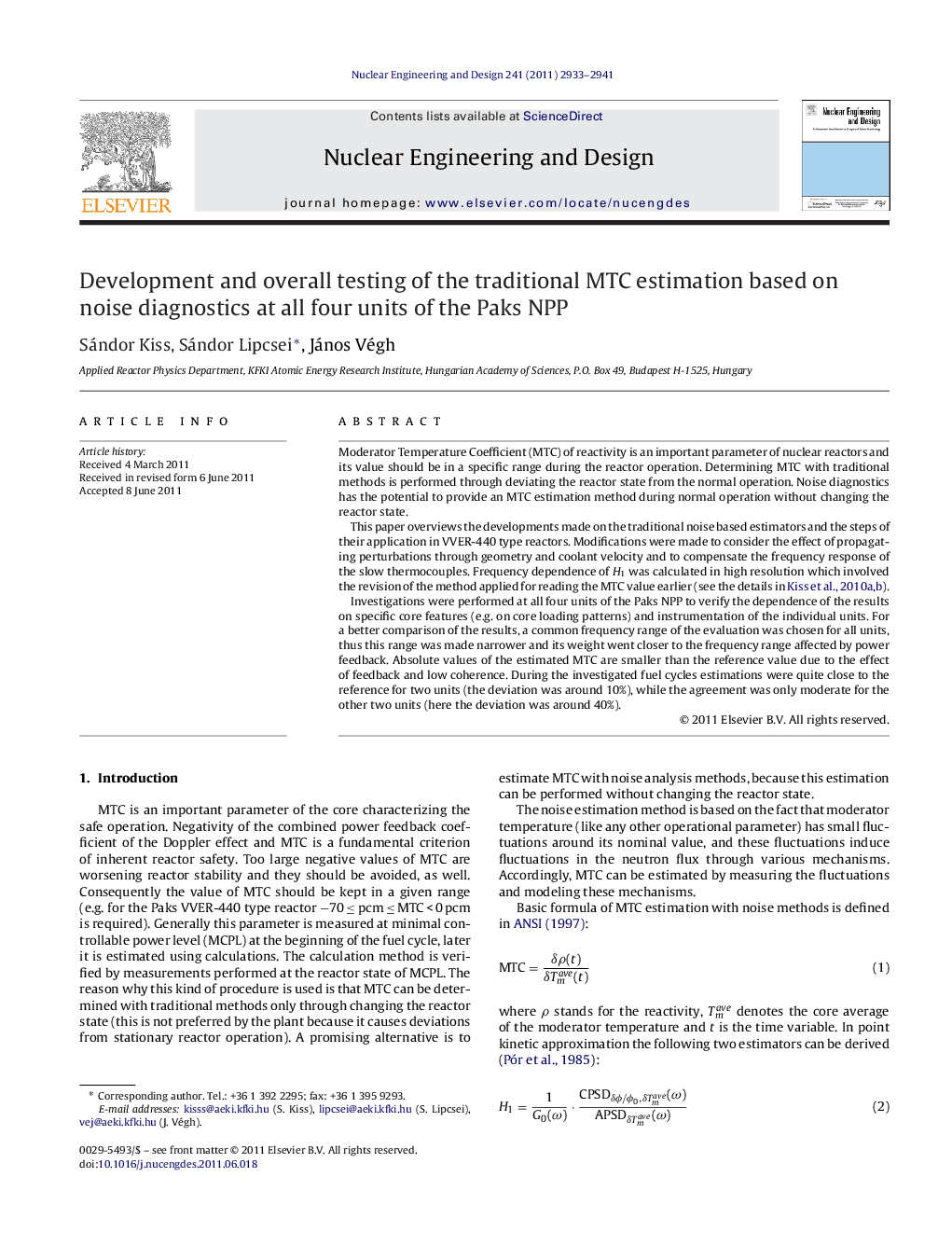| کد مقاله | کد نشریه | سال انتشار | مقاله انگلیسی | نسخه تمام متن |
|---|---|---|---|---|
| 297412 | 511756 | 2011 | 9 صفحه PDF | دانلود رایگان |

Moderator Temperature Coefficient (MTC) of reactivity is an important parameter of nuclear reactors and its value should be in a specific range during the reactor operation. Determining MTC with traditional methods is performed through deviating the reactor state from the normal operation. Noise diagnostics has the potential to provide an MTC estimation method during normal operation without changing the reactor state.This paper overviews the developments made on the traditional noise based estimators and the steps of their application in VVER-440 type reactors. Modifications were made to consider the effect of propagating perturbations through geometry and coolant velocity and to compensate the frequency response of the slow thermocouples. Frequency dependence of H1 was calculated in high resolution which involved the revision of the method applied for reading the MTC value earlier (see the details in Kiss et al., 2010a and Kiss et al., 2010b).Investigations were performed at all four units of the Paks NPP to verify the dependence of the results on specific core features (e.g. on core loading patterns) and instrumentation of the individual units. For a better comparison of the results, a common frequency range of the evaluation was chosen for all units, thus this range was made narrower and its weight went closer to the frequency range affected by power feedback. Absolute values of the estimated MTC are smaller than the reference value due to the effect of feedback and low coherence. During the investigated fuel cycles estimations were quite close to the reference for two units (the deviation was around 10%), while the agreement was only moderate for the other two units (here the deviation was around 40%).
► Development of the traditional noise based estimators applied in VVER-440 reactors.
► Considering the effect of propagating perturbations, geometry and coolant velocity.
► Compensating the frequency response of the slow thermocouples.
► Investigations at all four units of the Paks NPP during whole fuel cycles.
► Estimations were quite close to the reference values (10–40% difference).
Journal: Nuclear Engineering and Design - Volume 241, Issue 8, August 2011, Pages 2933–2941